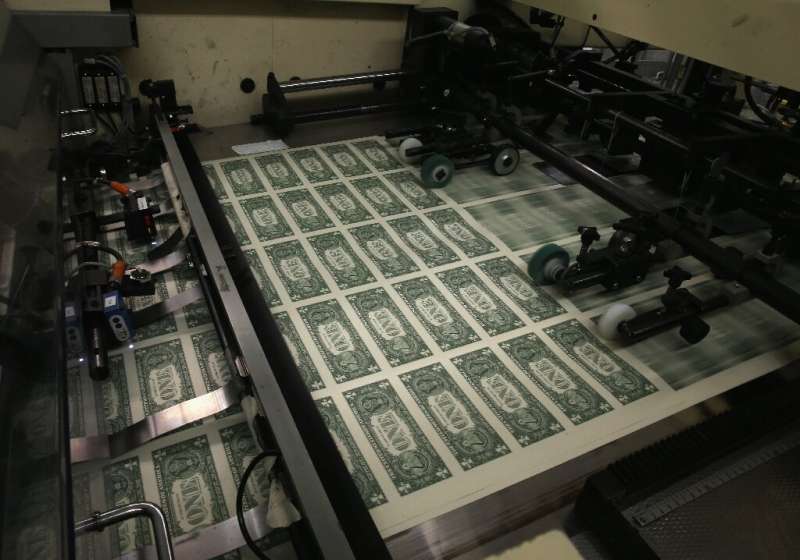Pandemic money: where's it coming from and who pays?

The mammoth bailout sums unleashed to combat the 2008 financial crisis fuelled populist backlashes in many countries as taxpayers were handed a whopping bill.
This time feels different. Governments and central banks are all too aware that they face an unprecedented test from an invisible enemy that could kill their economies.
The sums mobilised now—trillions in direct fiscal and monetary support, and loan guarantees—outstrip what was offered in 2008 to rescue banks from their own folly.
What's on offer?
All major economies are battling to halt the carnage on financial markets, intervening directly to save businesses and jobs, and indirectly via their central banks.
"We are witnessing a panic movement in which markets, like businesses, are seeking liquidity at all costs, and selling anything that is sellable," said Agnes Benassy-Quere, professor at the Paris School of Economics.
There is "no other way than to issue a lot of debt and to make sure that it will be bought by central banks", she said.
While the virus appears contained in China, European countries and the United States are going all out with spending promises to limit the fallout of their own runaway outbreaks.
The biggest stimulus package comes from Washington where Senate Republicans on Thursday introduced a $1 trillion plan in line with demands from President Donald Trump.
Democrats are unconvinced by some of Trump's wish-list. But eschewing the traditional Republican aversion to debt and deficits, Senate Majority Leader Mitch McConnell underscored that "this is no ordinary time".
Treasury Secretary Steven Mnuchin said the government had "no problem issuing more debt" at super-low rates after recent interventions by the Federal Reserve.
What's the cost?
The Fed and others including the European Central Bank are engaged in shock-and-awe tactics to reassure the markets and ensure plenty of money is on hand for businesses.
Their actions, slashing interest rates or engaging in outright purchase of government debt ("quantitative easing") finally brought some calm to markets on Friday.
One benefit for governments—at least richer ones with access to deep capital markets—is that they can issue long-term bonds now at fixed rates at next-to-no cost.
"The only issue is in 10-20 years when you have to refinance the debt," said Charlie Robertson, global chief economist at Renaissance Capital in London.
"No one foots the bill because borrowing costs are close to zero—it's magic money," he said, adding there is no risk of inflation given the scale of the shock.
The situation is a lot more alarming for developing economies that lack both access to cheap borrowing and advanced medical systems.
"If South Africa can't afford to control the virus, it will spread again. No country can afford to keep every other country banned from travelling," Robertson told AFP.
"So I would argue there has to be a global financing solution to address this virus crisis," he said, urging action from the G7 and G20 nations.
What more can be done?
As the G20's Saudi presidency readies a virtual summit, Allianz chief economist Ludovic Subran agreed concerted action is needed for poorer nations, especially in Africa.
"All the international measures have been taken without any coordination, it is quite unprecedented," he said.
Christopher Dembik, Saxo Bank's head of macroeconomic research, said advanced economies should emulate the United States and Hong Kong in offering cash directly to households.
"We must go beyond tax deferrals and state guarantees," he said, suggesting also a "temporary but drastic drop in corporate taxation" to stop companies collapsing en masse.
Aside from extreme budgetary cases like Italy, "there is absolutely no concern about sovereign debt" because central banks themselves are amassing the new issuances, he noted.
Italy, which has surpassed China to register the most coronavirus deaths, wants its EU partners to go further by tapping the eurozone's 410-billion-euro ($440-billion) war chest.
© 2020 AFP


















